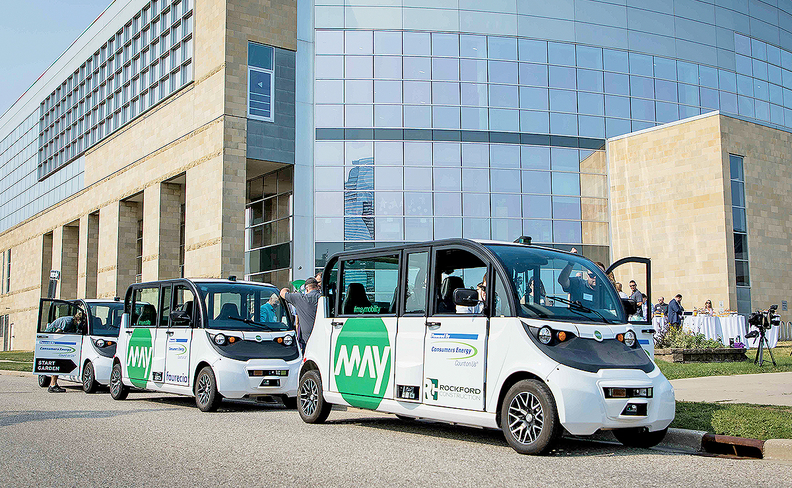Driverless shuttle ridership remains steady as officials consider expansion options
Mar 30, 2020
The City of Grand Rapids is evaluating the success of its foray into the future of transportation.
Ridership of the city’s newly acquired self-driving shuttles remains steady at 8,000 rides per month, passing over the 50,000 total passenger mark.
Nine months into the year-long pilot program, city officials will soon determine whether to continue and expand the pilot program beyond its scheduled endpoint in July 2020.
Known as the Grand Rapids Autonomous Vehicle program, the fleet consists of four autonomous vehicles.
Autonomous Vehicle Grand Rapids (AVGR) shuttles seat five people and an average of 500 rides per day. These electric-powered vehicles are free for public use.
The driverless transportation system runs five days per week along a 3.2-mile route that follows the Dash West Route. It makes over twenty stops, including the David D Hunting YMCA, Grand Rapids Children’s Museum, Van Andel Arena and Bridge Street Market.
The safety attendants who monitor each shuttle have not reported any crashes so far. However, they occasionally take manual control of the vehicle to navigate tricky turns or harsh weather conditions.
“The question was always ‘how will the shuttles operate in snow and ice?’” said Josh Naramore, director of Mobile GR. “The answer is that it’s excitingly boring. So far, the experience is such that it’s no different than if somebody was driving you around.”
Grand Rapids city officials first heard about the driverless shuttles during a presentation by the startup company May Mobility at South by Southwest, and they later invited May Mobility to host workshops exploring the project at Start Garden.
The Grand Rapids Autonomous Vehicle program follows pilot programs in Detroit, Michigan; Providence, Rhode Island; and Columbus, Ohio. It costs $650,000, with $250,000 coming from public funds and $400,000 from private investors.
The pilot program fits within the City of Grand Rapids Strategic Plan, which lists mobility as one of its strategic priorities. One of the top mobility objectives is to pursue innovative, 21st-century mobility options, including carshare, bikeshare and e-scooter options.
City officials hope that new transportation options draw attention toward the city’s public transportation system as the Rapid bus’s monthly ridership continues to decline.
Narramore says that it is too early to know what the pilot program will reveal about public transportation in Grand Rapids. GR Mobile has adjusted the shuttle’s route and added wheelchair accessibility in response to survey data, but it does not yet have a large enough sample size to reach broader conclusions about ridership demographics or changing trends.
“We’re halfway through, and we’re just starting to get some of the learning lessons,” Narramore said.






















